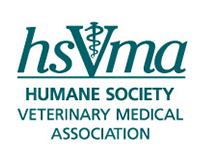Veterinarians Should Urge Horse Owner Vigilance in the Face of Equine Herpes OutbreakMay 27, 2011 An outbreak of equine herpesvirus myeloencephalopathy (EHM), a severe neurological disease caused by the highly contagious equine herpesvirus type 1 (EHV-1), recently struck horses in the western region of the United States and Canada. In addition to infecting equids such as horses, mules and donkeys, EHV-1 may infect some camelids, including llamas and alpacas. The initial cases of EHM arose in horses who attended a championship competition of the National Cutting Horse Association in Ogden, UT, April 29 through May 8. So far, confirmed cases have been reported in eight states (California, Colorado, Idaho, New Mexico, Oregon, Texas, Utah and Washington), although horses from a total of 18 states attended the event, where they were all potentially exposed to the virus. Background information on EHM and EHV-1EHV-1 is not a new virus; it is endemic in horse populations around the world. It can cause upper respiratory infections, and abortions in pregnant mares. EHM is the most infrequent, but potentially devastating, form of EHV-1 infection, causing severe neurological abnormalities. Clinical signs of EHM often begin with nasal discharge, lethargy and pyrexia and can progress to ataxia, paresis or paralysis of the hind limbs, lower limb edema, urinary incontinence, inability to urinate (in these cases bladder rupture becomes a significant risk) or defecate, loss of tail tone, an inability to rise, and it can also result in death. Many horses develop latent EHV infections. Although they display no clinical signs themselves, they can actively infect other horses. The EHV-1 incubation period is typically 4-6 days but it can be longer. Fever and other signs may occur over the next 10 days. EHM, the neurological form of the disease, generally occurs 8-12 days after the primary infection. Horses may continue to shed the virus up to 21 days after clinical signs subside. The EHV-1 virus can be transmitted both directly and indirectly. Horse to horse transmission can occur through close contact, primarily with infected nasal secretions, or via aerosolization of secretions at close range. Indirect infection can occur via contaminated water buckets, feed tubs, tack, grooming equipment and supplies, and by contaminated human hands, clothing or shoes. For these reasons, horse owners should be advised to employ sound barn hygiene and proper biosecurity practices at all times. All areas and items to which the virus may have spread should be thoroughly disinfected. Precautions urged for horse ownersVeterinarians should urge horse owners to be vigilant in monitoring their horses for early signs of illness. If they suspect or observe any signs, they should immediately isolate the horse(s) and limit movement of any horses on and off their premises. Horse owners should seek veterinary advice about confirming diagnosis. It is important to distinguish EHM from other neurological diseases with similar symptoms, such as rabies, equine protozoal myeloencephalitis (EPM) and West Nile virus. In addition to diagnosis, veterinarians can help horse owners design quarantine and treatment regimens, along with comprehensive disease prevention protocols, including strict barn hygiene guidelines. Although EHM is a potentially life-threatening disease, it is not necessarily a death sentence for infected horses. Early treatment improves the chances of a favorable recovery. EHM is more difficult to treat once neurological signs manifest. Treatment may involve round-the-clock monitoring, supportive care including the use of anti-inflammatory medications, the use of slings and regular monitoring of bladder status. No vaccine is currently labeled to provide protection against EHM. The suspected and confirmed cases of EHM/EHV have been primarily from the western region of the United States. However, the full extent of the outbreak is unknown and under investigation, and there is always the risk of contact between horses in the West and other regions if the animals are being transported. If horse transport is essential, horse owners should limit stress on their horses, as any stresses can make horses more susceptible to the virus. They should have all their equine health documents organized and their horses loaded in a manner that allows for easy visual examination. This will help facilitate their passage through inspection points. Due to the outbreak, some states are tightening travel restrictions and entry requirements. If a horse owner plans to transport a horse(s) across state lines, we recommend they contact the state veterinarian’s office of each state before their departure. This contact information can be found on the AAEP's website. BLM action urged regarding threat to wild horsesAn additional area of concern is the threat to wild horses from this disease. The Humane Society of the United States has requested that the BLM discourage and, if possible and appropriate, prohibit private horse owners from bringing potentially exposed domestic horses onto federal lands where they may contact and possibly infect wild horses or other equines. Because EHV-1 infection in horses is highly contagious, the possibility of disease transmission from domestic to wild horses is far from hypothetical. For example, if domestic horse owners are permitted to leave hay on the ground that has been picked through by horses carrying the EHV-1 virus, wild horses who frequent campgrounds and other equine recreational areas may move in to eat the contaminated remains of the hay leftovers, and thus, would be exposed to the disease. Since EHV-1 infections can be fatal, should such a scenario occur, the impacts on wild horse populations could be disastrous. Additional information and resourcesMore helpful information is available to horse owners at the American Association of Equine Practitioners (AAEP) website at: aaep.org/EHV_resourcesowner.htm. Veterinarians can obtain additional technical information about the outbreak and EHV-1 and EHM—including FAQs, an archived webinar, radio interviews, an ACVIM background paper and a client education brochure—from the AAEP at: aaep.org/ehv_resources.htm. The Center for Equine Health at the UC Davis School of Veterinary Medicine also offers information about the recent outbreak and more information about EHV-1 and EHM in general at: vetmed.ucdavis.edu/ceh/currenthealth.cfm. An additional resource is the USDA’s Animal and Plant Health Inspection Service’s Animal Health Monitoring and Surveillance update at: www.aphis.usda.gov/vs/nahss/equine/ehv/index.htm. |
